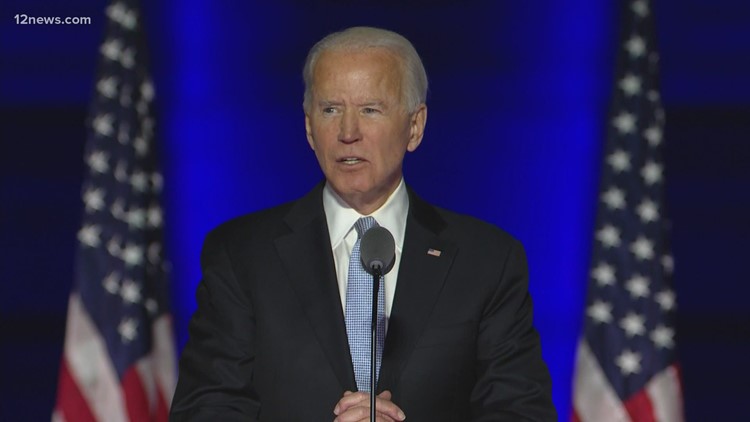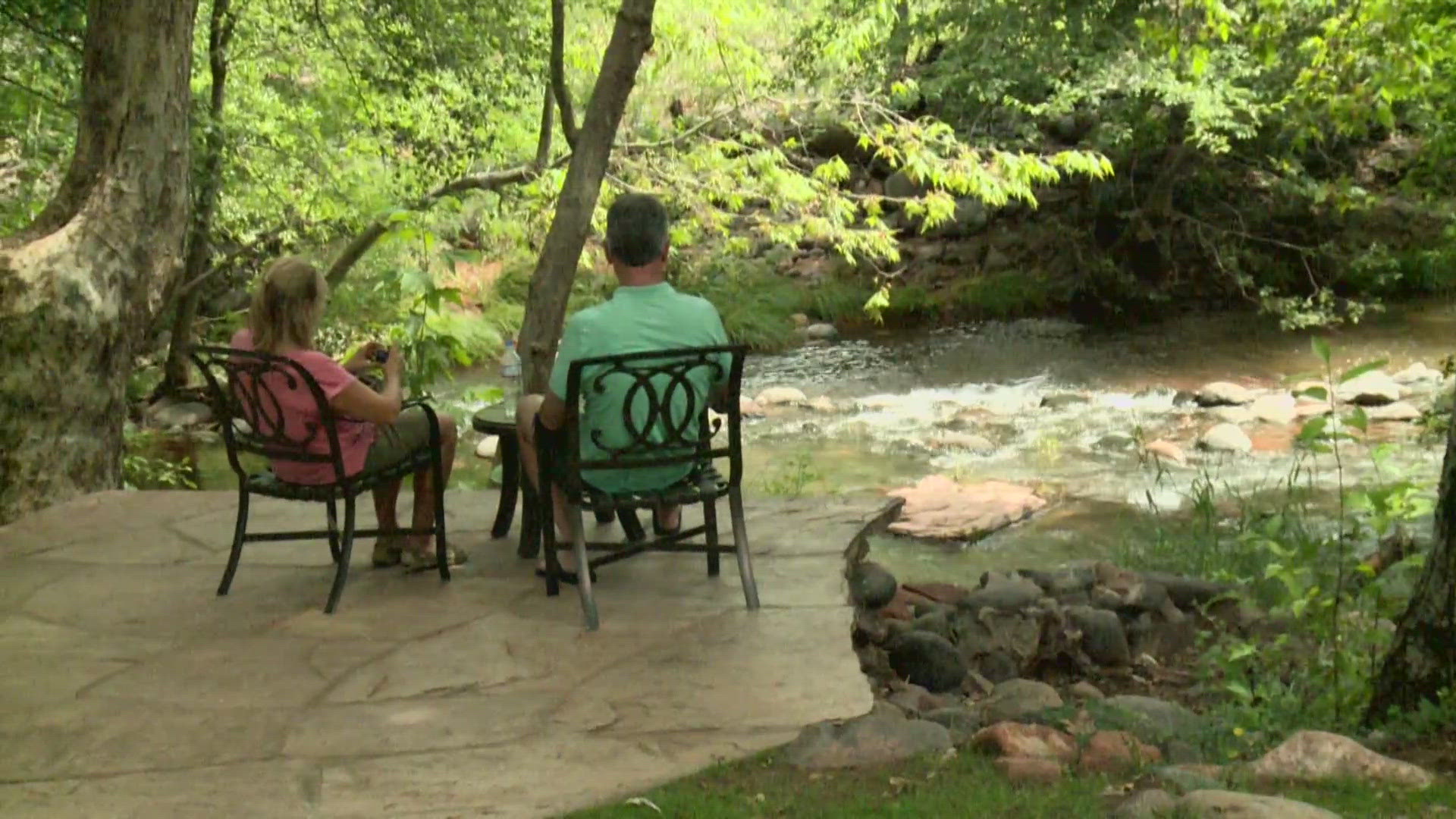PHOENIX — The evidence of a divided nation is obvious in the rhetoric from politicians and their supporters, the election and its aftermath, but it’s also reflected in something less obvious: the economic output of America’s counties.
The Brookings Institute, a nonprofit public policy organization in Washington D.C., analyzed the GDP of the counties that President-elect Joe Biden won compared to the GDP for the counties that President Donald Trump won.
Their results show that the counties that went for Biden, including Maricopa County, make up 70% of the United States’ economy.
The economic divide is “intensifying”
After the 2016 election, the Brookings Institute conducted an analysis of the economic output of the counties that Hillary Clinton won compared to the counties Trump won. Clinton won 472 counties while Trump won thousands, however, the counties that went for Clinton made up 67% of the country’s economic output.
Mark Muro, a senior fellow with the Metropolitan Policy Program at the Brookings Institute, said, “She won these few, very concentrated urban places that are dominating the economy. Meanwhile, Trump won thousands and thousands of counties. They were small town, rural places with much less economic activity going on in them.”
Muro and the Brookings Institute repeated the same analysis of the 2020 election and found that the economic divide has grown. Biden flipped five counties that Trump won in 2016 and increased the economic divide by three percent.
“The same dynamic of this urban-rural divide is intensifying,” said Muro.
Maricopa County plays a role in the divide increase
Trump won Maricopa County in 2016 but lost it in 2020. While Biden flipping Maricopa County was close, the shifting demographics of the county’s workforce suggest a larger overall trend moving forward.
Muro points out that the economic profile for Maricopa County is dominated by a major university, biotech, start-ups and modern businesses that export goods. The growth of these sectors of the economy often coincides with a demographic shift in the electorate from conservative to liberal.
“What is striking is that it demonstrates that Maricopa County is more and more becoming one of those big, dynamic, diverse, professional service-oriented hubs. It used to be viewed as highly conservative and that seems to be changing,” Muro said.
According to the Brookings Institute data, Biden picking up Maricopa County largely contributed to elevating his share of the economy to 70% over Clinton’s 67%.
“The Democrat Party is even more now the party of big, dense, professional service-oriented metro areas that are doing pretty well economically,” said Muro. “Whereas the GOP controls this vast, small town, rural area but, in general, it’s not doing very well economically.”
The differences in the workforce demographic are striking
Maricopa County’s industry profile mirrors that of other large, urban counties that went for Biden. While the counties that went for Trump are more oriented towards agriculture, mining and natural gas industries.
Who these counties rely on for their workforce is strikingly different. The industries in counties that vote Blue seek more college-educated workers and are more ethnically diverse, while industries in Red counties rely on less-educated workers and are more homogeneously white.
“They’re not only doing different things, they are different people,” said Muro.
The divide has larger implications for the country, but something can be done
It’s clear that ideologically the two parties are not on the same page, and economically they are living in two different realities. This is making it difficult for the country to move forward on meaningful economic policy.
“The two parties don’t just not like each other; they represent very different parts of the economy. So, the country can’t agree on the kind of investments or action steps to take to boost the economy because the two parties feel they reside in different economies,” Muro said.
So, what, if anything, can be done to tamp down the differences between the two parties and the people who identify with them?
Greater investment in Redder states and funding relief to struggling, rural places are just two ideas Muro suggests for closing the economic divide.
“We haven’t really tried to mitigate this problem,” said Muro. “We’re only in the last four or five years recognizing how grave it is. I think we now recognize it; a lot of people see the problem. Perhaps there will be some impulse to come together to work on it.”
You can read Muro’s full report on the nation’s political and economic divide here.
Track all of our current updates with Arizona politics on our 12 News YouTube channel. Subscribe for updates on all of our new uploads.



